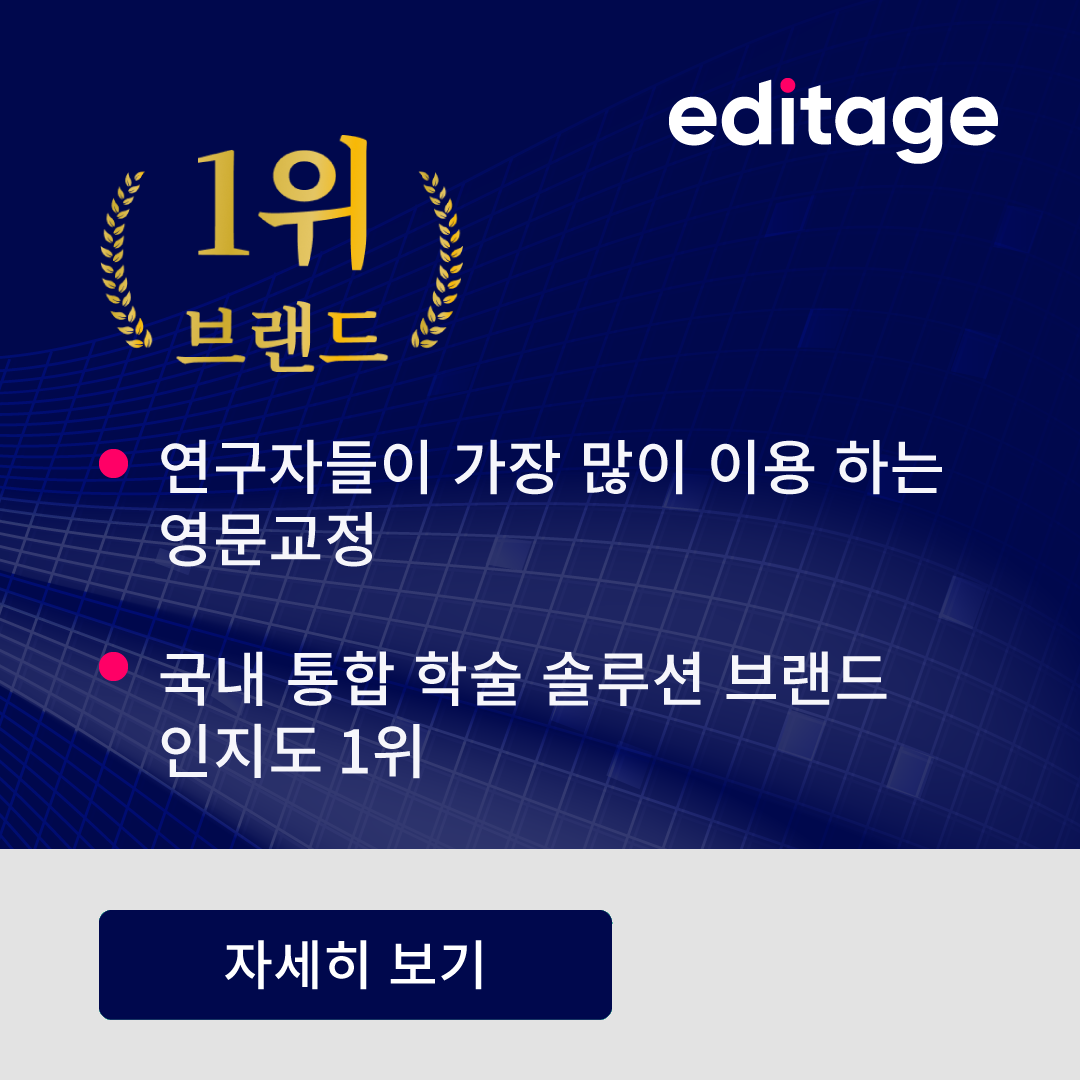After preparing a manuscript, your next step is to choose a journal for the publication of your research. It is crucial that you select a peer-reviewed journal which will present your research in the best way and convey it to the right target audience. And of course, the list of journals you have published in can directly and indirectly affect you career advancement, professional reputation, and funding opportunities.
Given below are several criteria that we have found to be the most important in accurately selecting a peer-reviewed journal for manuscript submission.
1Is there a match between the subject of your article and the journal's aim and scope?The most common yet avoidable reason for journal rejection is mismatch between the manuscript and the journal aims and scope. 1
First and foremost, determine whether the subject matter of your article matches that of the target journal. Consider the sort of research that the journal focuses on. Is it theoretical (e.g., Acta Biotheoretica) or applied (e.g., Annals of Applied Biology)? Is the range of articles sought by the journal broad-based or very narrow in focus?
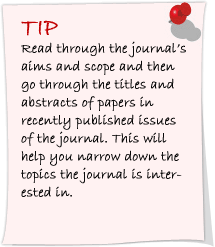 Journals are usually very specific about their subject area. Within the subject area also, the journal may focus only on a particular aspect of that subject. For example, Histopathology and The Journal of Pathology are two much respected journals which focus on different aspects of the same subject, namely, pathology. Histopathology is intended to be of practical value to surgical and diagnostic histopathologists, while the Journal of Pathology contains articles about the pathophysiological and pathogenetic mechanisms of human disease.
Journals are usually very specific about their subject area. Within the subject area also, the journal may focus only on a particular aspect of that subject. For example, Histopathology and The Journal of Pathology are two much respected journals which focus on different aspects of the same subject, namely, pathology. Histopathology is intended to be of practical value to surgical and diagnostic histopathologists, while the Journal of Pathology contains articles about the pathophysiological and pathogenetic mechanisms of human disease.
Finally, confirm that your target journal accepts the article type you intend to submit. For example, if your paper is a case study, check that the journal publishes case reports. Submission to a journal that does not accept the type of article you’ve written gives you an almost 100% chance that the manuscript will be rejected.
2What is the readership and target audience?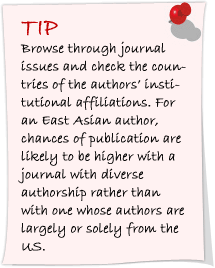 The following factors should be assessed:
The following factors should be assessed:
Given below are several criteria that we have found to be the most important in accurately selecting a peer-reviewed journal for manuscript submission.
1Is there a match between the subject of your article and the journal's aim and scope?The most common yet avoidable reason for journal rejection is mismatch between the manuscript and the journal aims and scope. 1
First and foremost, determine whether the subject matter of your article matches that of the target journal. Consider the sort of research that the journal focuses on. Is it theoretical (e.g., Acta Biotheoretica) or applied (e.g., Annals of Applied Biology)? Is the range of articles sought by the journal broad-based or very narrow in focus?
 Journals are usually very specific about their subject area. Within the subject area also, the journal may focus only on a particular aspect of that subject. For example, Histopathology and The Journal of Pathology are two much respected journals which focus on different aspects of the same subject, namely, pathology. Histopathology is intended to be of practical value to surgical and diagnostic histopathologists, while the Journal of Pathology contains articles about the pathophysiological and pathogenetic mechanisms of human disease.
Journals are usually very specific about their subject area. Within the subject area also, the journal may focus only on a particular aspect of that subject. For example, Histopathology and The Journal of Pathology are two much respected journals which focus on different aspects of the same subject, namely, pathology. Histopathology is intended to be of practical value to surgical and diagnostic histopathologists, while the Journal of Pathology contains articles about the pathophysiological and pathogenetic mechanisms of human disease. Finally, confirm that your target journal accepts the article type you intend to submit. For example, if your paper is a case study, check that the journal publishes case reports. Submission to a journal that does not accept the type of article you’ve written gives you an almost 100% chance that the manuscript will be rejected.
2What is the readership and target audience?
 The following factors should be assessed:
The following factors should be assessed:- Multidisciplinary journal. If, for example, your paper could have a bearing on public policy or could change the way nurses handle patient care, then choose a broad-based journal that reaches a wide and non-technical audience.
- Specialty journal. If your paper is highly specialized or technical, you’ll do better to publish in a journal with a small but very specific target audience. Reaching the right readership can sometimes be more important than reaching a wide readership.
- How popular is the journal among your peers? Talking to established colleagues will help you assess whether the journal is widely read among your peers.
3Is the journal highly visible?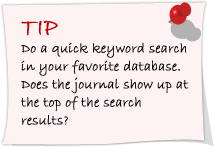 Once your paper is published, it should be easy to find by other researchers. Journal visibility plays an important role in this regard.
Once your paper is published, it should be easy to find by other researchers. Journal visibility plays an important role in this regard.
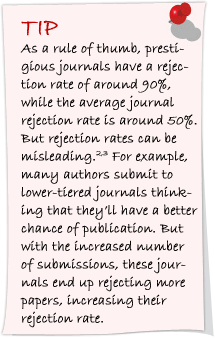 Some authors put a premium on journal prestige. Here are some factors to consider.
Some authors put a premium on journal prestige. Here are some factors to consider.
5What is the journal’s turnaround time?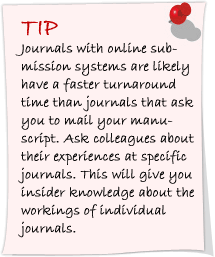
 Once your paper is published, it should be easy to find by other researchers. Journal visibility plays an important role in this regard.
Once your paper is published, it should be easy to find by other researchers. Journal visibility plays an important role in this regard.- Is the journal included in electronic databases? Is the journal indexed in ISI’s Web of Science? Is it indexed in the popular subject-specific databases in your field (like EconLit or PsychINFO)? This improves the visibility of your research in your chosen field of research and may also increase the number of times your article is cited.
- Is the journal available online? Publishing in journals that are only circulated in print can seriously limit the number of people coming across or reading your work.
 Some authors put a premium on journal prestige. Here are some factors to consider.
Some authors put a premium on journal prestige. Here are some factors to consider.- Editorial board members. Prestigious journals usually have eminent researchers as members of their Editorial Board. Visit the journal website to check the names on the Editorial Board. Are the Board members well-known in your field of study?
- Journal sponsorship. Is the journal owned or sponsored by a prestigious society in your field?
- What is the journal's impact factor? Don’t just look at the actual impact factor, since impact factor values vary by field. Consider the impact factor relative to those of similar journals within your field.
- Talk to senior, established colleagues. Which journals do they regularly read? Which journals do they feel have a high standard of articles?
5What is the journal’s turnaround time?

- Peer review period. How many issues does the journal publish in a year? A monthly journal is much more likely to review your article quickly compared with a journal that only publishes once a year. Some journals list the date submitted and date accepted. Comparing these dates will give an approximate idea of the turnaround time.
- Publication delay. If the journal has an online edition, does it post accepted articles online there once approved for publication? If so, this means that your article will be published online soon after it is accepted (and for practical purposes, will be considered as a published paper), even if it appears in print much later. For those looking to publish in a whirlwind (less than two months), open access may be the best option.
Checklist for journal selection
While you choose a journal for publication, you should ensure the following:
| Does the subject of your article match the journal's subject focus? |
| Does the journal accept the article type you intend to submit? |
| Is the journal read by your target audience? |
| Is the journal included in bibliographic and subject-specific databases? |
| Does the journal have an online edition? |
| Is the journal's impact factor in line with your requirements? |
| Is the journal regarded as a prestigious one in its field by colleagues and peers? |
| What is the turnaround time for articles submitted to the journal? |
| How many times a year is the journal published? |
| What are the publication charges? |
| Is the length and structure of your manuscript acceptable to the journal? |
Conclusion
Carefully selecting the journal to which to submit your manuscript greatly reduces the chances of rejection of your work. Once you have taken a preliminary decision on the journal, read the Instructions to Authors to discover the limitations imposed by the journal in the form of article format, word count, citation styles, photograph specifications, publication costs, etc. This will help you make a final decision.
- Ali J (2010). Manuscript rejection: Causes and remedies. Journal of Young Pharmacists, 2(1): 3-6. doi: 10.4103/0975-1483.62205.
- Schultz DM (2010). Rejection rates for journals publishing in the atmospheric sciences. Bulletin of the American Meteorological Society, 91(2): 231-43. doi: 10.1175/2009BAMS2908.1.
- Aarssen LW, Tregenza T, Budden AE, Lortie CJ, Koricheva J, Leimu R (2008). Bang for your buck: Rejection rates and impact factors in ecological journals. The Open Ecology Journal, 1(1): 14-19. doi: 10.2174/1874213000801010014.



